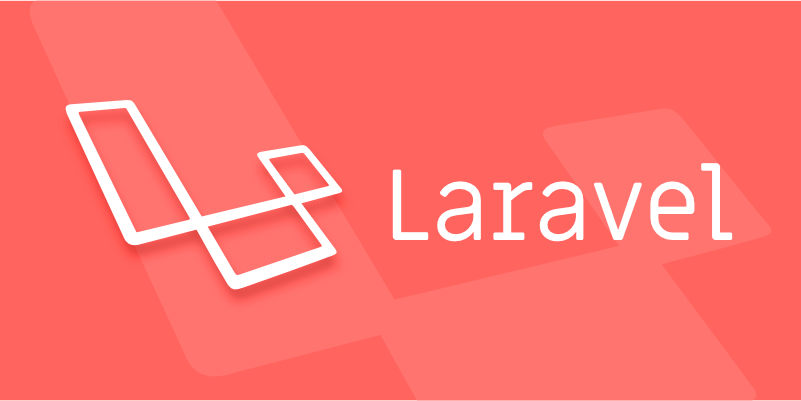Laravel form verification can be implemented through the validate() method in the controller. 1. Use validate() to define rules such as required, email, unique, etc. to ensure data compliance; 2. You can pass in the second parameter to customize the error message, or set a global Chinese prompt in lang/zh-CN/validation.php; 3. Use the @error directive to display error messages in the Blade template, and use old() to retain the input value; 4. Advanced tips include: a) use sometimes to implement conditional verification, b) verify array fields through users.*.name syntax, c) create a form request class (php artisan make:request) to separate complex verification logic; 5. Common rules are required, string, numeric, array, confirmed, unique, exists, min, max, regex and nullable. The complete process ensures data security and user experience, ultimately achieving reliable form processing out of the box.

Laravel's form verification functions are powerful and flexible, and can help you easily ensure that the data submitted by users meets expectations. Here is a practical Laravel form validation tutorial for beginners and those who want to consolidate their foundation.

1. Basic form verification (using controller verification)
The most common way to verify is to use validate() method in the controller. Suppose you have a user registration form that requires verification of your name, email, and password.
// public function store(Request $request) in your controller
{
$validated = $request->validate([
'name' => 'required|string|max:255',
'email' => 'required|email|unique:users',
'password' => 'required|min:8|confirmed',
]);
// After verification is passed, save the user User::create($validated);
return redirect()->route('users.index')->with('success', 'User creation succeeded!');
}illustrate:

-
required: The field must exist and is not empty. -
string: Must be a string. -
max:255: up to 255 characters. -
email: Must be in the legal email format. -
unique:users: unique in the users table. -
min:8: The minimum password is 8 digits. -
confirmed: There must be a correspondingpassword_confirmationfield with the same value.
If verification fails, Laravel will automatically redirect back to the previous page and store the error message into the session.
2. Customize the error message
The default error message is in English, you can customize more friendly tips:

$validated = $request->validate([
'name' => 'required|string|max:255',
'email' => 'required|email|unique:users',
'password' => 'required|min:8|confirmed',
], [
'name.required' => 'The name cannot be empty',
'email.email' => 'Please enter a valid email address',
'password.min' => 'Password requires at least 8 characters',
'password.confirmed' => 'The password entered twice is inconsistent',
]); You can also set global Chinese prompts in lang/zh-CN/validation.php to make the entire project unified.
3. Display error message in Blade template
In the view, use the $errors variable to display verification failure information:
<!-- resources/views/users/create.blade.php -->
<form method="POST" action="{{ route('users.store') }}">
@csrf
<div>
<label>Name</label>
<input type="text" name="name" value="{{ old('name') }}">
@error('name')
<span style="color: red;">{{ $message }}</span>
@enderror
</div>
<div>
<label>Email</label>
<input type="email" name="email" value="{{ old('email') }}">
@error('email')
<span style="color: red;">{{ $message }}</span>
@enderror
</div>
<div>
<label>Password</label>
<input type="password" name="password">
@error('password')
<span style="color: red;">{{ $message }}</span>
@enderror
</div>
<div>
<label>Confirm password</label>
<input type="password" name="password_confirmation">
</div>
<button type="submit">Submit</button>
</form>-
@error('field')will check for errors in the field. -
old('name')retains user input and avoids refilling the form.
4. Advanced verification skills
a) Conditional verification (sometimes required, sometimes not required)
Use the sometimes rules:
$request->validate([
'phone' => 'sometimes|required|numeric',
]); Verify only if phone field exists.
b) Verify array fields
For example, adding users in batches:
$request->validate([
'users.*.name' => 'required|string',
'users.*.email' => 'required|email',
]);c) Use Form Request class—suitable for complex verification
Generate a special request class:
php artisan make:request StoreUserRequest
Edit the generated app/Http/Requests/StoreUserRequest.php :
public function rules()
{
Return [
'name' => 'required|string|max:255',
'email' => 'required|email|unique:users',
'password' => 'required|min:8|confirmed',
];
}
public function messages()
{
Return [
'name.required' => 'Name required',
'email.unique' => 'This email has been registered',
];
}Use in the controller:
public function store(StoreUserRequest $request)
{
User::create($request->validated());
return redirect()->route('users.index');
}This approach is clearer and is especially suitable for large projects.
5. Quick check of common verification rules
| rule | illustrate |
|---|---|
required
|
Required |
email
|
Legal mailbox format |
string
|
String |
numeric
|
number |
array
|
Array |
confirmed
|
Requires xxx_confirmation field |
unique:table,column
|
Database unique (default check for fields with the same name) |
exists:table,column
|
The value must exist in the database |
min:8
|
Minimum length/value |
max:255
|
Maximum length/value |
regex:/pattern
|
Regular Match |
nullable
|
Allow to be empty (usually in accordance with other rules) |
Basically that's it. Laravel's verification mechanism is out of the box, combined with validate() , custom messages and Blade error display, can quickly achieve safe and reliable form processing. It is not complicated, but it is easy to ignore details. For example, confirmed requires corresponding fields, and unique should pay attention to ignoring the current user when updating, etc.
The above is the detailed content of Laravel form validation tutorial. For more information, please follow other related articles on the PHP Chinese website!

Hot AI Tools

Undress AI Tool
Undress images for free

Undresser.AI Undress
AI-powered app for creating realistic nude photos

AI Clothes Remover
Online AI tool for removing clothes from photos.

Clothoff.io
AI clothes remover

Video Face Swap
Swap faces in any video effortlessly with our completely free AI face swap tool!

Hot Article

Hot Tools

Notepad++7.3.1
Easy-to-use and free code editor

SublimeText3 Chinese version
Chinese version, very easy to use

Zend Studio 13.0.1
Powerful PHP integrated development environment

Dreamweaver CS6
Visual web development tools

SublimeText3 Mac version
God-level code editing software (SublimeText3)

Hot Topics
 Creating Custom Validation Rules in a Laravel Project
Jul 04, 2025 am 01:03 AM
Creating Custom Validation Rules in a Laravel Project
Jul 04, 2025 am 01:03 AM
There are three ways to add custom validation rules in Laravel: using closures, Rule classes, and form requests. 1. Use closures to be suitable for lightweight verification, such as preventing the user name "admin"; 2. Create Rule classes (such as ValidUsernameRule) to make complex logic clearer and maintainable; 3. Integrate multiple rules in form requests and centrally manage verification logic. At the same time, you can set prompts through custom messages methods or incoming error message arrays to improve flexibility and maintainability.
 Adding multilingual support to a Laravel application
Jul 03, 2025 am 01:17 AM
Adding multilingual support to a Laravel application
Jul 03, 2025 am 01:17 AM
The core methods for Laravel applications to implement multilingual support include: setting language files, dynamic language switching, translation URL routing, and managing translation keys in Blade templates. First, organize the strings of each language in the corresponding folders (such as en, es, fr) in the /resources/lang directory, and define the translation content by returning the associative array; 2. Translate the key value through the \_\_() helper function call, and use App::setLocale() to combine session or routing parameters to realize language switching; 3. For translation URLs, paths can be defined for different languages ??through prefixed routing groups, or route alias in language files dynamically mapped; 4. Keep the translation keys concise and
 Working with pivot tables in Laravel Many-to-Many relationships
Jul 07, 2025 am 01:06 AM
Working with pivot tables in Laravel Many-to-Many relationships
Jul 07, 2025 am 01:06 AM
ToworkeffectivelywithpivottablesinLaravel,firstaccesspivotdatausingwithPivot()orwithTimestamps(),thenupdateentrieswithupdateExistingPivot(),managerelationshipsviadetach()andsync(),andusecustompivotmodelswhenneeded.1.UsewithPivot()toincludespecificcol
 Sending different types of notifications with Laravel
Jul 06, 2025 am 12:52 AM
Sending different types of notifications with Laravel
Jul 06, 2025 am 12:52 AM
Laravelprovidesacleanandflexiblewaytosendnotificationsviamultiplechannelslikeemail,SMS,in-appalerts,andpushnotifications.Youdefinenotificationchannelsinthevia()methodofanotificationclass,andimplementspecificmethodsliketoMail(),toDatabase(),ortoVonage
 Understanding and creating custom Service Providers in Laravel
Jul 03, 2025 am 01:35 AM
Understanding and creating custom Service Providers in Laravel
Jul 03, 2025 am 01:35 AM
ServiceProvider is the core mechanism used in the Laravel framework for registering services and initializing logic. You can create a custom ServiceProvider through the Artisan command; 1. The register method is used to bind services, register singletons, set aliases, etc., and other services that have not yet been loaded cannot be called; 2. The boot method runs after all services are registered and is used to register event listeners, view synthesizers, middleware and other logic that depends on other services; common uses include binding interfaces and implementations, registering Facades, loading configurations, registering command-line instructions and view components; it is recommended to centralize relevant bindings to a ServiceProvider to manage, and pay attention to registration
 Understanding Dependency Injection in Laravel?
Jul 05, 2025 am 02:01 AM
Understanding Dependency Injection in Laravel?
Jul 05, 2025 am 02:01 AM
Dependency injection automatically handles class dependencies through service containers in Laravel without manual new objects. Its core is constructor injection and method injection, such as automatically passing in the Request instance in the controller. Laravel parses dependencies through type prompts and recursively creates the required objects. The binding interface and implementation can be used by the service provider to use the bind method, or singleton to bind a singleton. When using it, you need to ensure type prompts, avoid constructor complications, use context bindings with caution, and understand automatic parsing rules. Mastering these can improve code flexibility and maintenance.
 Strategies for optimizing Laravel application performance
Jul 09, 2025 am 03:00 AM
Strategies for optimizing Laravel application performance
Jul 09, 2025 am 03:00 AM
Laravel performance optimization can improve application efficiency through four core directions. 1. Use the cache mechanism to reduce duplicate queries, store infrequently changing data through Cache::remember() and other methods to reduce database access frequency; 2. Optimize database from the model to query statements, avoid N 1 queries, specifying field queries, adding indexes, paging processing and reading and writing separation, and reduce bottlenecks; 3. Use time-consuming operations such as email sending and file exporting to queue asynchronous processing, use Supervisor to manage workers and set up retry mechanisms; 4. Use middleware and service providers reasonably to avoid complex logic and unnecessary initialization code, and delay loading of services to improve startup efficiency.
 Handling exceptions and logging errors in a Laravel application
Jul 02, 2025 pm 03:24 PM
Handling exceptions and logging errors in a Laravel application
Jul 02, 2025 pm 03:24 PM
The core methods for handling exceptions and recording errors in Laravel applications include: 1. Use the App\Exceptions\Handler class to centrally manage unhandled exceptions, and record or notify exception information through the report() method, such as sending Slack notifications; 2. Use Monolog to configure the log system, set the log level and output method in config/logging.php, and enable error and above level logs in production environment. At the same time, detailed exception information can be manually recorded in report() in combination with the context; 3. Customize the render() method to return a unified JSON format error response, improving the collaboration efficiency of the front and back end of the API. These steps are






